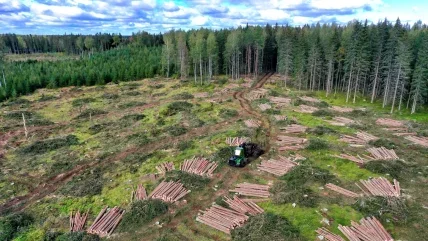
A few weeks ago, the Observer reported on development of genetically modified (GM) plants, including trees, that can sequester and store more carbon than their natural counterparts.
Among leading developers in the field is Californiabased Living Carbon. It has created around 100 different lines of poplars which are CO2 super absorbers.
Earlier this year, clones of four of the best carbon performers were planted in pilot projects in Georgia and Ohio to monitor their sequestration rates. These comprise a total of around 120 hectares and 170,000 saplings. Only about 5% of planting are the GM varieties as the company wants “to start small and avoid monocultures”.
Living Carbon also sells carbon removal credits from its plantations, paying landowners from the income to use their land for its research. It was founded in 2019 and is backed by US$36m of venture capital funding.
The company has enabled its trees to take-up more CO2 by increasing their photosynthesis efficiency to make them a “super-charged carbon sink”.
Part of the adaptation process has also focused on a “reverse photosynthesis” function of natural trees, which is to release some of their CO2 and take up oxygen. The genetically modified trees instead direct this ‘surplus’ CO2 into wood growth.
“We took a lot of learning from what had been shown to work well in crop plants and our big innovation has been having a similar trait work in trees,” said Living Carbon co-founder and CEO Maddie Hall. She added that the company has also developed a “metal accumulation trait so trees can absorb more metals in their roots and stem”, further enhancing carbon retention.
“These metals naturally slow wood decay, creating durable wood products and retaining carbon in wood for a longer period of time,” states Living Carbon. “Our trees are also unique in their ability to grow on degraded land with high concentrations of heavy metals. As they grow, they can clean soil made toxic by industrial activity, store more carbon, and create investment opportunities on otherwise abandoned land.”
In a scientific paper, the company reported that its modified poplars increased in mass by 35-53% more than natural controls over a four month period. That’s equivalent to removing 17-27% more CO2 from the atmosphere.
Living Carbon aims to plant a further 2,400ha with about four million trees by the end of spring 2024, and says it could scale this up to 1.6 million ha by 2030. Given a 40-year lifespan and the trees achieving the carbon sequestration rates seen in trials, this could mean a total of 600 megatonnes of CO2 being absorbed, equivalent to 1.6% of annual global emissions.
Ms Hall underlined the potential for further scaling up the project, pointing to the fact that there are 60 million ha of land available for reafforestation in the US alone.
Importantly the US authorities have ruled that Living Carbon’s trees don’t need to be regulated as genetically modified as there’s no risk of the genes inserted making them more invasive.
Which all sounds great. But don’t forget the Triffids…





